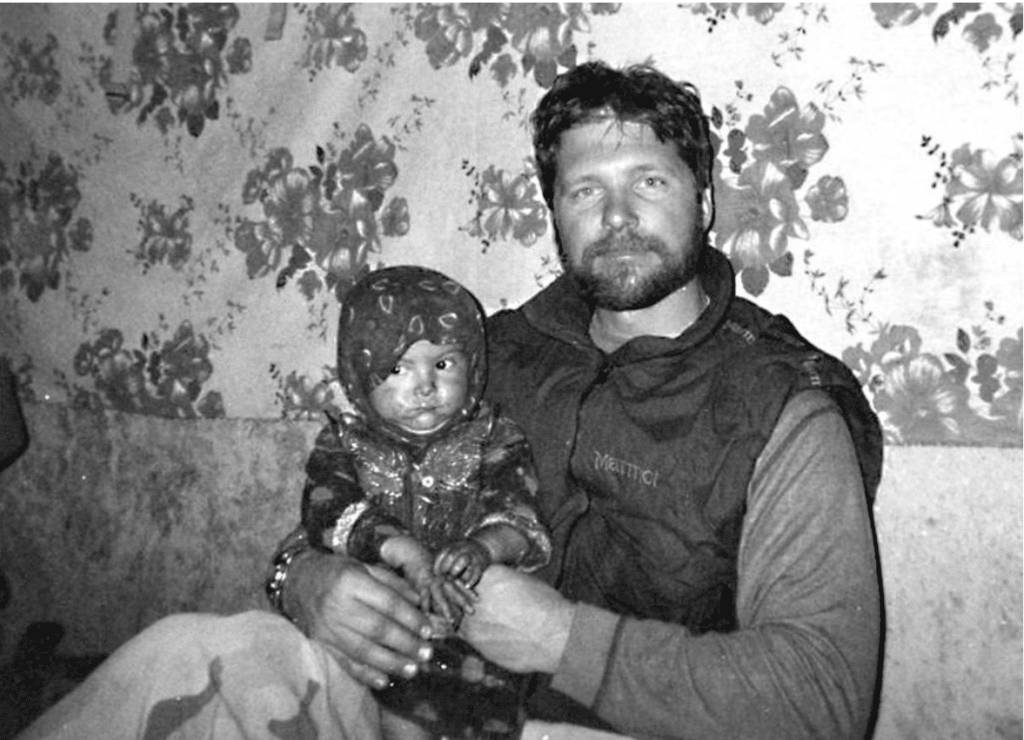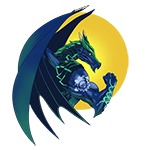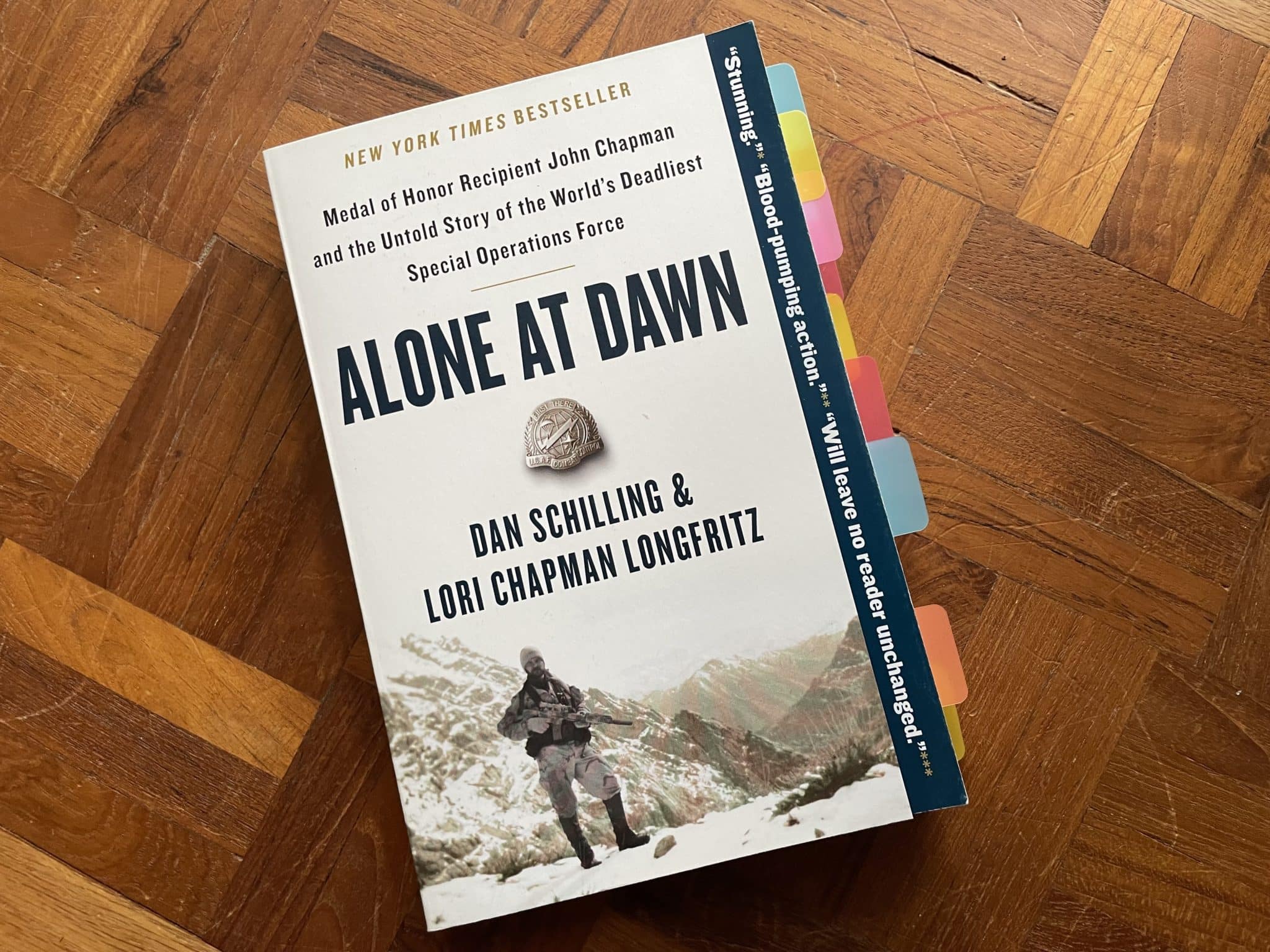This article contains affiliate links. This means that if you make a purchase through one of these links we may get a small commission from the sale at no additional cost to you. Thank you for your support.
Dan Schilling and Lori Chapman Longfritz Shed Light on John Chapman, Air Force CCT, and Operation Anaconda
In early March of 2002, I was finishing up my Master’s degree at the University of South Carolina. It would be another six months before I would ship off to Air Force basic training and encounter the name John Chapman. Chapman, in March 2002, was already deployed, getting ready to take part in one of the most famous battles of the Afghanistan war. Sgt Chapman was in the first edition of the PDG (Professional Development Guide) that I studied, although it was probably called something else at the time. This handbook was one that every enlisted Airman read in order to learn all they could about the Air Force and how it operated, including well-known individuals from famous operations in history.
At the time, the only information offered was that Chapman was one of several military members that perished in Afghanistan as part of Operation Anaconda, also known as the Battle of Robert’s Ridge. He died saving others, but the details were murky and they didn’t make a huge impression on me at the time, not like learning about TSgt Tim Wilkinson. He was an AF Pararescueman who I was already familiar with from reading the book, Black Hawk Down, Mark Bowden’s searing tale of a mission in Somalia gone horribly wrong.
Thank goodness, someone has done the necessary digging and fleshed out the details of Operation Anaconda so that we can finally know what happened on that lone mountaintop in Afghanistan some twenty plus years ago. That someone, it turns out, not by coincidence, is Dan Schilling, himself a former AF Combat Controller, or CCT for short, who just happened to take part in that ill fated Somalia mission. He’s joined by Lori Chapman Longfritz, the sister of John Chapman, who helps shed light on John’s personality and early life.
In fact, Alone at Dawn: Medal of Honor Recipient John Chapman and the Untold Story of the World’s Deadliest Special Operations Force, covers not only Operation Anaconda and John Chapman’s life, but also the history of CCT in general. This is necessary for one to fully understand who John Chapman was and what the nature of his mission on the mountaintop, Takur Ghar, was really all about.
The History of Air Force Combat Control
Throughout the book, but especially in the beginning, Schilling offers glimpses into the history of Combat Control, beginning in the Vietnam era. Essentially, Combat Controllers are Air Force personnel trained to an extremely high degree of competency in marking targets and directing air strikes from on the ground. They are like air traffic controllers who, instead of safely landing planes (although many could do this too), bring planes in to execute precision strikes in the most austere environments. Although there are other military members capable of calling in air strikes, none are trained to the expert level that AF CCT are.
Additionally, because of their expertise they are often attached to other Special Operations units, including Navy SEALS and Army Special Forces. This necessitates that they train to the highest degree of physical fitness and receive additional training in combat diving, tactics, etc in order to match the level of the units they are embedded with. In fact, because of all their radios and batteries, they are often carrying more weight than their other Special Operations Forces (SOF) brothers. Those other SOF forces are all deadly operators, which is well known, but what is not as obvious is that because the AF CCT come with the ability to control air assets from the ground, they are often the most deadly and sweeping force on the battlefield. These Airmen are able to level large targets and groups of enemies with incredible precision and at a moment’s notice. Several instances in the book have them improvising procedures in the field in order to overcome challenges and still accomplish their mission.
Reading about the development of CCT from Vietnam to Grenada, to Desert Storm, on up to the Afghanistan war in the early 2000’s was fascinating to say the least. I can’t thank Dan Schilling enough for painstakingly pulling together the facts and painting a picture of this least known Special Operations Force.
The Life of Medal of Honor Recipient John Chapman

Through Lori Chapman Longfritz’s words we start to get a picture of what kind of man John Chapman was. The above photo is one of my favorites from the book, a shot of John holding an Afghan toddler in a remote village. It speaks to the openness and kindness that he embodied, that the mother placed her vulnerable child in the lap of this foreign stranger, someone she had only known for a few days.
We get additional background and stories from John’s former classmates and friends. He was a standout diver in high school. He was one of the cool kids, but not so cool that he didn’t treat others with genuine concern, including those who had a hard time fitting in. There are also descriptions of how John handled the long and arduous training that would earn him his scarlet beret, worn by all CCT. And of course, we get a picture of how he met his wife Valerie and what home life was like across his career for them and their two daughters.
Behind the Scenes of Operation Anaconda
Oh boy, where to begin. Schilling gives a lot of detail on how events unfold leading up to Operation Anaconda. This includes the various units involved, individuals on the ground, and those making higher level decisions from operations centers off the battlefield. Sometimes these were good calls made by competent, thoughtful individuals and sometimes it seems not. Unfortunately, although engrossing to read about, it is tense and unnerving reading about how certain aspects of the battle unfolded.
Large risks were taken. Some of these paid off, like in the case of a small unit named Mako-31 that pushed through punishing terrain in hostile territory to make it to their position on the battlefield, just barely missing a cave filled with enemy fighters. Other risks and consequences were caused directly due to competing priorities and decisions to silo communications and leave others with a need to know in the dark.
You can see how carefully I’m choosing my words here, lol. I’m in no position to judge, but Mr. Schilling lays it all out in stark detail. Most infuriating is that some responsible seem to not only have escaped accountability, but have been promoted and/or decorated despite the drastic results. That’s all before we even get to the controversy that almost kept John Chapman and his heroic actions from being recognized appropriately.
Conclusion
I highly recommend Alone at Dawn. It’s inspiring, action-packed, and gives an expert historical perspective of the least known Special Operations community that is the incredible group known as Air Force Combat Controllers. But, it also includes the complexities and lessons of the cautionary tale that Operation Anaconda would become. It’s a study in leadership, both good and bad. Most importantly, it gives us a closer look at MSgt John Chapman, a gentle and caring family man, part of an elite brotherhood, who found himself alone on a mountaintop and nonetheless fought ferociously to save his teammates in one of the most amazing and harrowing scenes to emerge out of the Afghanistan conflict.
Rating 5/5: Highly Recommended
MSgt Chapman’s actions on Takur Ghar have the distinction of being the only Medal of Honor caught on video, due to a Predator drone that was circling overhead at the time. You can view the video on YouTube. A word of caution though, it’ll make your eyes sweat.






